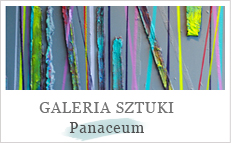How to bring a lost smile back? How to create a forgotten glow? Should we come back to the history of beauty, to recall old patterns, the golden rule, divine division, or Pythagorean proportions?
What key one has to use to find harmony that fits in with the person who confides his smile to us? Should we rely on the Greek Canon − a statue carved by Polyclitus in the 4th century BC − because this stone man embodies all the rules of the right proportions? Or maybe to read Plato again? This philosopher at the turn of the 5th and 4th centuries BC warned against creating “illusive appearances”, “illusive images” instead of similarities.
What is a measure of beauty and where to find its essence? Does the ideal, a scheme from which you can draw, exist? If one has to believe a German mystic from the fourteenth century Henry Suso, then there is nothing pleasant except for something that remains in harmony with the deepest recesses of our divine nature. If so, one should get to know this nature before undertaking the treatment. We try to listen, to see, to understand a patient. Learn his expectations and doubts, distinguish between embarrassment and fear, and sometimes the vicissitudes of life. Get closer, find some affinity, consistency − as Andrzej Szczeklik wrote about them. Only then we have a chance to learn what the patients really want. Do they want to regain the appearance that they remembered many years ago, a countenance from an old photography? Do they dream about shiny, snow-white teeth or do they expect the treatment to become the slavish imitation? The resemblance? Because they believed William Hogarth, for instance, who argued that human beings nurture love for imitation since the very birth, they rejoice in and are amazed at the sight of slavish imitation, as well as feel delight at the sight of the perfect similarity to the imitated thing.
Just like this woman – an admirer of mountain expeditions, scuba diving and the supporter of ecological nutrition − who once asked: how to make the teeth fit and form a whole? She cared about health and natural appearance. She has already started to like the discoloration and the yellowish tint dominant in her smile. Neither the polychromy nor the dark colour of her teeth, nor their unevenness did not disturb her (fig. 1). “If homogeneity (…) was a true source of beauty, the more things seemed to be homogeneous, the more pleasure we would receive from watching them. Yet it is not like that” − Hogarth explained.
We had been talking for a long time, more than once, finally we decided to make a gentle improvement of the smile, without excessive interference. After the orthodontic treatment, the clinical crowns of the twelfth and twenty first teeth were extended, and then the incisors on the right side and the first tooth on the left were polished and made ready for all-ceramic crowns. “The avoidance of regularity remains the unchanging principle of the painting composition” − the painter maintained. Here, the avoidance of unity brought about the effect of natural, intact teeth (fig. 2).
Umberto Eco once wrote: “The twenty-first century provides us with the unrestrained and absolute polytheism of beauty”. A nice smile which captivates the surrounding world can be almost symmetrical, with the corners of the mouth parting like in a classical Greek statue. A smile can also be an equivalent of contradiction, create personal charm due to delicate defects of setting, shape and colour of teeth. Some people dream about imitation, they want only slightly to improve themselves, while others would like to change a lot. To open the lips and see the purest white in the mirror, the one met in American movies about love.
This lady knew well what she wanted. And almost at once she demanded the brightest tint of white. A grey shade of teeth has always caused pain, was a real nuisance. Looking at her reflection, she saw only the tooth bonding that have long lost brightness and glow (fig. 3).
Does a dentist have a right to refuse? To convince her to follow the natural colour, while she dreams of perfection recognised as the snow white?
After brightening the teeth, a veneer was made on the twelfth tooth, a crown on the central eleventh incisor and a zirconia bridge on the twenty first and twenty third teeth (she lost two of them a few years ago). A smile appeared on her face for the first time since we met. Still uncertain, with a drooping lip on the left because she had been trying to cover the defect for a long time (no longer existing; fig. 4).
Which of the smiles is nicer? Is it possible to compare them at all? Let us recall Botticelli’s Venus (fig. 5) and an obese woman from Luciana Freud’s picture Benefits Supervisor Sleeping (fig. 6). There will be probably those for whom a leggy blonde, just born out of foam, will embody the ideal of beauty, a pure one. Someone else will be delighted with the fat woman and her ordinary human side which is exposed.
Which key one has to use? Does some secret code, due to which we have to bring back the lost smile, exist? Should we measure the width and length of the teeth, determine the position of each, know perfectly proportions, use templates and diagrams, and remember about divina proportio? Do we also have to look for individual beauty − and this one escapes the patterns most often. To forget about the order, to make the shapes thicker, distort the lines, avoid stereotypes − just like in case of Freud’s Venus.
Here is a masculine smile, real and improved (fig. 7 and 8). If one had to blindly follow the canon, one concept of beauty, measure the length of teeth with obsession, look at their position in relation to each other, then the status post operationem would be actually unacceptable. Because if one performed gingivectomy, a perfect gingiva could be finally visible, as well as the same amount of all premolars and molars. One could apply veneer on the fourteenth tooth, hidden in the shadow of the fifth one, change the shape of the fangs to shorten them optically. But when one listens to the patient’s story about sailing on distant seas, sport medals and appetite for life, then it turns out that he or she dreams of having fixed, more attractive, but not perfect teeth. That is why the hygienization treatment was performed which reduced the indicator of API and PBI from 100% to 20% each. It resulted in the stable periodontal situation, the caries cure, and after the removal of the loose upper incisors, the implants were inserted on their place. And their owner can taste the world again.
Similarly like this young man. He wanted to charm a student, but it is difficult to do so with such a smile (fig. 9). He was patient, endured difficult orthodontic treatment (there was no jaw operation), maxillary sinus lift and implantation; finally after almost three years, he broadly smiled (dig. 10). Probably to another girl, but also a pretty one. And here you can argue about the ideal, point to a visible gum line on the left and notice a too short second tooth. You could strive for perfection, delay prosthetics about half a year to enjoy almost perfect symmetry. But he was pressed for time. And when he saw his teeth, he whispered to Anna Świrszczyńska: “I’m as happy as Larry”.
And what about him (fig. 11)? A constant seeker − he has probably visited all the doctor’s surgeries in the city; the owner of two dogs of rare breed, the amateur of good cuisine and refined drinks. In addition to that, suffering for bruxism and a cigarette smoker. He immediately declares that he does not intend to quit. Initially he mentioned only pure white in his mouth. However after a few visits, confessions and conversations about books and movies, not only did he stop smoking (although only for the time of preparation for implantation, the very surgery and the period of healing), but he also decided to colour the crowns similarly like his own teeth. He also promised to wear a dental bonding tray, which he did not want to wear earlier. Only the position of the teeth had to meet his idea of beauty (fig. 12). None of the slightly curved or overlapping fangs − he said.
Beauty has never been and is not something absolute, unchanged. It takes different forms. Drawbacks and imperfections often create personal charm and grace. It seems that dentists who bring back smiles should give permission for otherness, for separateness, for genuineness. Not to duplicate schemes, ready-made patterns, not to use cold calculations. Stick closer to the golden mean than to the golden ratio.
The boy’s orthodontic treatment was carried out by doctor Jolanta Jarka, and doctor Jakub Malinowski cured the woman’s occlusion from the first figure.





